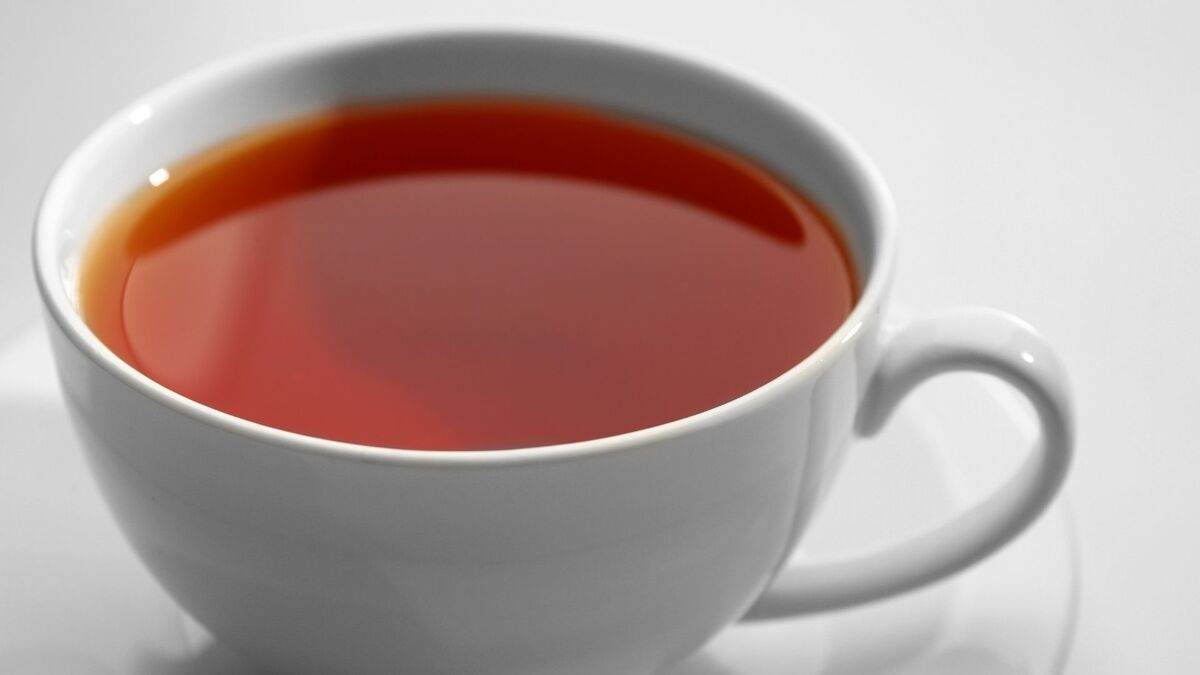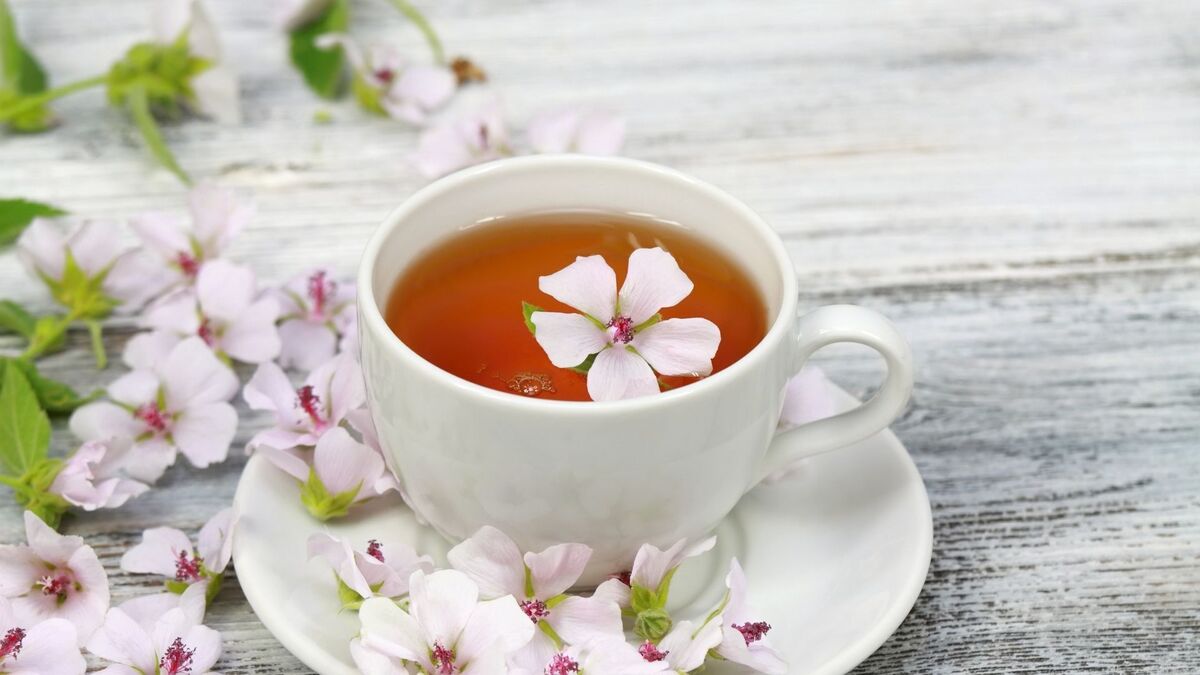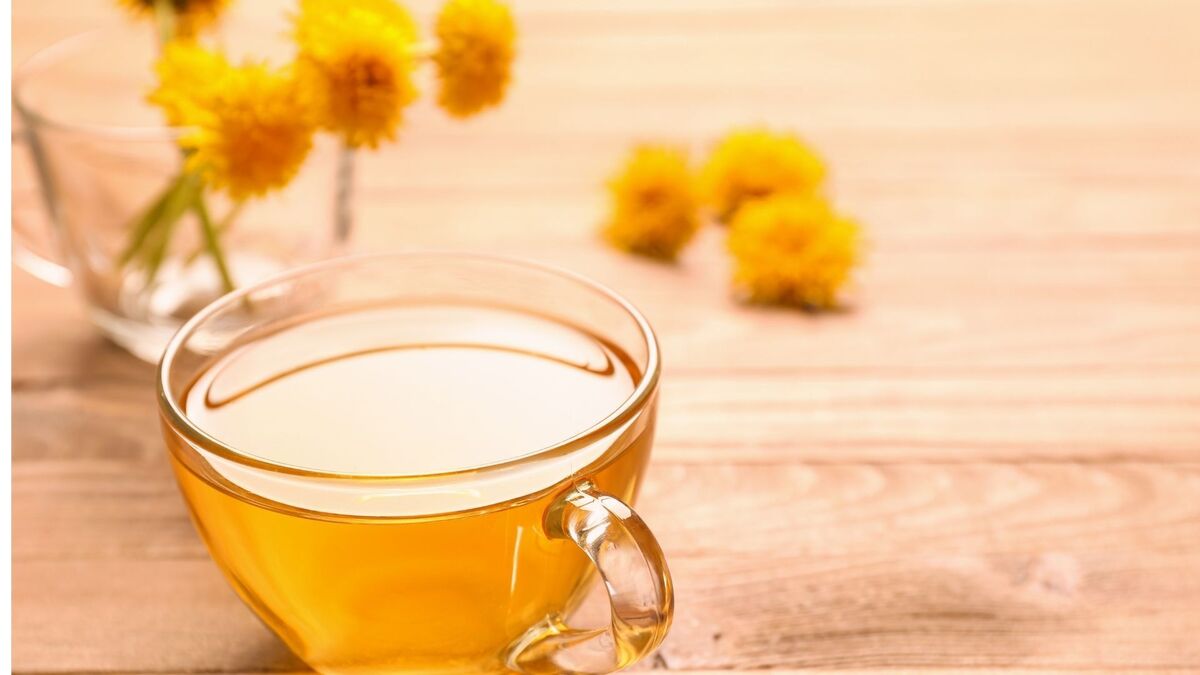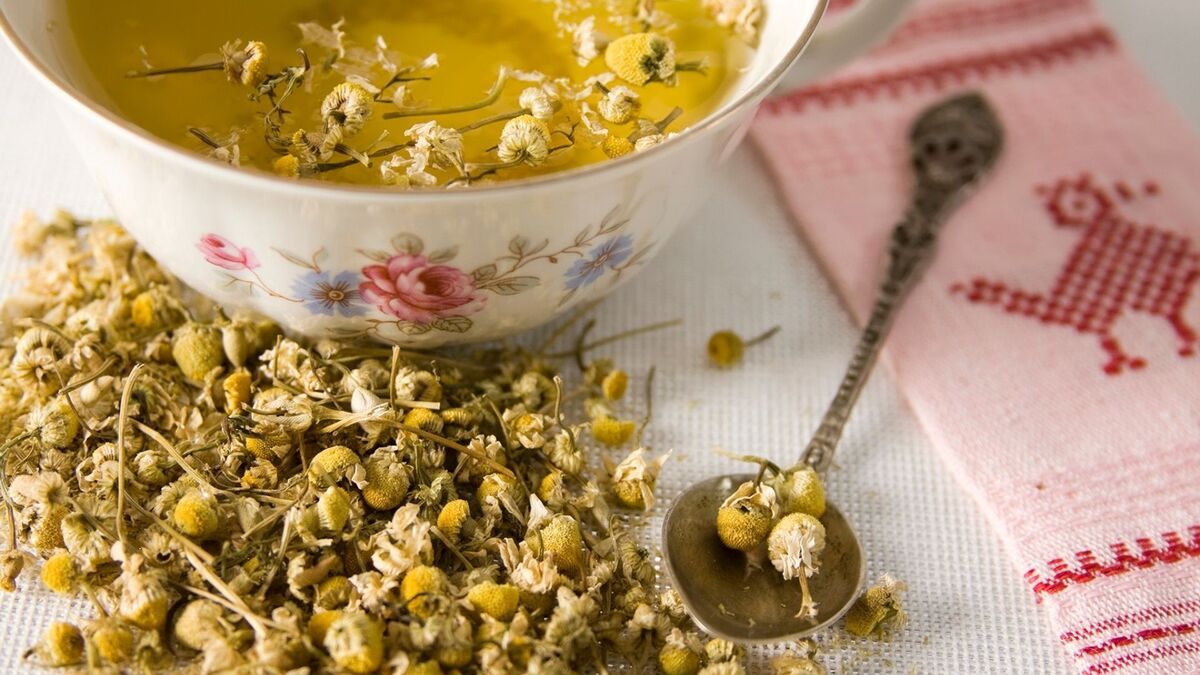Table of contents
General considerations about homemade tea for stomach pain

There are some specific teas that are used for the treatment of problems like stomach pain, among them is peppermint, mallow and melon seeds. They are able to bring relief to stomach pain or burning sensation in the upper part of it.
These teas are effective because of their soothing properties that are able to act directly on the digestive system. Stomach pain can be caused by problems such as gastritis, gastroesophageal reflux, among other problems. To solve this problem, you can rely on the tea, however, it can not replace medical treatment.
Want to know more about home teas for stomach pain? Check out this article!
Peppermint tea

Peppermint tea has properties that make it useful for treating stomach pains. This tea can be made very simply and its properties and benefits for the body are many. Check in more detail below!
Characteristics and properties of peppermint
Peppermint is a leaf rich in volatile oils, such as menthol and menthol. These oils have anti-inflammatory and antispasmodic properties, as well as soothing and analgesic. In its composition, it has substances capable of relieving stomach pain and also combat other symptoms of gastrointestinal problems, such as nausea and vomiting, for example.
This leaf has the ability to minimize irritation in the stomach, as well as reduce the feeling of bloating, combat poor digestion and also produce a calming effect on the liver.
General benefits of peppermint tea
Although many people do not know the benefits of peppermint, they are several. Among them is the fact that its properties are able to treat stomach pain. This plant has the ability to decrease irritation in the stomach, in addition to reducing the feeling of bloating.
In addition, peppermint is also useful for cases of poor digestion and even flatulence. It is able to produce a calming effect on the liver, which further facilitates the process of digesting food.
Ingredients and preparation of peppermint tea
To make peppermint tea, you will only need: 1 cup of water and a dessert spoon of chopped peppermint leaves. To prepare this tea, you will need to add in a cup the water over the chopped peppermint leaves. After that, you should cover it and let it sit for about 5 to 7 minutes.
After this process, you should strain it, sweeten it with honey, if you want, and drink 3 to 4 cups of this tea daily, always after meals. With this, you can enjoy all the properties that this tea can offer.
Boldo Tea

Boldo is considered a medicinal plant that is widely used as a home remedy. It has properties that help especially the liver, besides fighting inflammation and preventing problems like gastritis and even cancer. Learn more below!
Characteristics and properties of boldo
Boldo tea has large amounts of a substance called boldine and also rosmarinic acid. These are substances that have digestive, anti-inflammatory, antispasmodic and also astringent properties. These properties help in reducing gastric acidity, giving protection to the stomach and relieving pain.
Because of these properties, boldo tea is used to combat problems such as heartburn and poor digestion. Therefore, if you have any of the problems mentioned above, you can resort to the use of boldo tea, however, never fail to seek a doctor.
General benefits of boldo tea
Boldo has properties that help various functions of the body. It helps improve liver function through the action of a substance called boldina. In addition, boldo is also able to help people who are seeking to lose weight due to the glycosylated flavonoids.
Gallbladder problems are also combated by Boldo tea, due to the fact that it stimulates the release of bile, which is a compound that helps in the digestion of food. Boldo also has properties that can improve digestion and also decrease the amount of gas.
Ingredients and preparation of Boldo tea
The ingredients are very simple and so is the method of preparation. You will only need: 1 teaspoon of chopped boldo leaves and 150 ml of water. Adding chopped boldo leaves in 150 ml of boiling water is the first step to prepare the tea. Then, you should let the mixture rest for 5 to 10 minutes. Soon after, you should strain it and drink it warm right after.
This tea should be consumed 2 to 3 times a day, before or after meals. Another option that is also viable, is to take this tea before bed, to aid digestion after dinner. It is important to be aware that boldo tea can cause side effects and is contraindicated for some groups of people.
Fennel tea

Fennel is a medicinal plant that has a large amount of substances such as tannins, alkaloids, saponins, flavonoids and also essential fatty acids. This plant is widely used as a home remedy, mainly to improve digestion, fight gas and also colic. Learn more below!
Characteristics and properties of fennel
Fennel tea is rich in substances such as anethole, estragole and camphor. Its composition allows it to have an anti-inflammatory, antispasmodic, analgesic and digestive action. These properties allow fennel tea to act on problems such as stomach inflammation.
In addition, it is also effective in dealing with the feeling of bloating as it helps to empty the stomach, which makes it an excellent tea for stomach pain relief and also in fighting heartburn attacks.
General benefits of fennel tea
Among the benefits of fennel tea, one can mention the fact that it is a great ally for digestion, aids in relieving menstrual pain, helps in hydrating the individual, helps people sleep better, is a rich source of antioxidants, helps reduce bad breath, among other benefits.
With all this list of benefits, you certainly can not stop consuming this tea. However, before consuming, try to consult a specialist and be aware of the contraindications of this tea. There are some specific groups that should not consume.
Ingredients and preparation of fennel tea
You will only need two ingredients to prepare this tea, they are: 1 tablespoon of fennel seeds and 1 cup of boiling water. First, you should add the fennel seeds in a cup of boiling water. After that, you should cover it and let it warm for about 10 to 15 minutes.
It is recommended to consume 2 to 3 cups of this tea daily, always 20 minutes before a meal. You can also prepare this tea using a fennel sachet. It should not be consumed by pregnant or breastfeeding women.
Alteia Tea

The hawthorn is a medicinal plant that is also known by other names, such as Mallow or Mallow. It is widely used to treat respiratory diseases, as it has expectorant properties. Learn more about hawthorn tea below!
Characteristics and properties of Alteia
Alteia tea, which is also known as white mallow or mallow, has properties that make this tea have anti-inflammatory, soothing and also calming effects. This plant also has properties that help protect the stomach.
It is extremely useful for relieving stomach pain or burning. However, it is important that this tea is not used recklessly, as it is contraindicated for children and women who are pregnant or breastfeeding. People with diabetes should also only consume this tea on a doctor's prescription.
General benefits of Alteia tea
The Alteia has soothing properties, anti-inflammatory, because it contains flavonoids, antitussive, ie, that relieve coughs, antibiotic, which fights infections, in addition to strengthening the immune system and has a hypoglycemic action, which reduces sugar levels in the bloodstream.
This plant is also used to help heal wounds in the mouth area, teeth, treat boils, acnes and also burns. With the guidance of a doctor, the consumption of Alteia tea will bring several benefits.
Ingredients and preparation of Alteia tea
In order for you to feel the benefits of Althaea, the best alternative is to prepare a tea with it. This tea is very easy to make, you will only need: 200 ml of water and 2 to 5 grams of dried Althaea root or leaves. To prepare the tea, first you must boil the water and add the root of the plant.
After that, you should cover and wait for at least 10 minutes. After this period, the water should be filtered and you should drink the tea warm, and the indicated amount for consumption is two or three cups a day.
Ginger Tea

Ginger is considered an edible root that is able to bring several benefits to the health of people. This root can make the individual lose weight, treat poor digestion, heartburn, nausea, gastritis, among other health problems. Learn more below!
Characteristics and properties of ginger
Ginger is a root that has in its composition substances such as gingerol, which is a bioactive compound that is able to accelerate metabolism and increase the burning of body fat, facilitating weight loss. In addition, ginger is also a powerful antispasmodic, which helps relax the muscles and combat poor digestion, vomiting and nausea.
Ginger also has antioxidant and anti-inflammatory properties, which make it prevent and even treat diseases like high blood pressure, gastroesophageal reflux and also arthritis.
General benefits of ginger tea
Ginger tea has substances such as gingerol and zingerone, which have anti-inflammatory and antiemetic properties, which help to relieve inflammation in the esophagus region and also decrease the acidity of the stomach. With this, the pain reduces considerably and the burning sensation in the stomach also.
In addition to the benefits mentioned above, ginger tea also has properties capable of relieving nausea and vomiting, which can be caused on account of stomach pains. Moreover, before consuming, check the contraindications.
Ingredients and preparation of ginger tea
To prepare the ginger tea is very simple. You will only need: 1 centimeter of sliced or grated ginger root and 1 liter of boiling water. Start putting the water to boil and adding the ginger. Let it boil for about 5 to 10 minutes. Remove the ginger from the cup and drink the tea 3 to 4 times throughout your day, always 20 minutes before a meal.
It is important to be aware of the fact that ginger tea should be avoided by people who have active bleeding in the stomach, because of an ulcer, for example, or who are using anticoagulant medications, as the properties of ginger would cause the bleeding to worsen.
Dandelion Tea

The dandelion tea is an excellent option for those who want to fight pain in the stomach, because it has anti-inflammatory properties, in addition to improving digestion, preventing the occurrence of gas and abdominal distension. Learn more below!
Characteristics and properties of dandelion
The dandelion is a medicinal plant that has properties that can help treat digestive disorders, liver and pancreas problems, and skin disorders. This plant has an antioxidant action and also anti-inflammatory. It is also effective in dealing with lack of appetite, biliary disorders, hemorrhoids, among other problems.
The dandelion is also able to increase the individual's insulin, being effective in the treatment of diabetes, besides having diuretic properties. This makes it can be used as a complement in the treatment of urinary infections.
General benefits of dandelion tea
The liver is certainly the organ most benefited by dandelion tea, as it has properties capable of eliminating toxins from the blood, as well as unclogging the bile ducts. Dandelion is also rich in dietary fiber, which causes several gastrointestinal problems to be avoided.
Pain, heartburn and gas are combated by dandelion tea. In addition, this plant also has essential fatty acids, as well as antioxidants, vitamins C and D, calcium, iron, magnesium, potassium and zinc.
Ingredients and preparation of dandelion tea
To prepare the dandelion tea is very easy, you will only need: 1 tablespoon of dried leaves and dandelion root and 200 ml of water. To prepare this tea, you should put the ingredients in a cup with boiling water and let it rest for 10 minutes.
After that, you should wait to warm up, then strain and drink up to 3 times during the day, always before meals. Before taking dandelion tea, be aware of the contraindications, because pregnant women and people with hypersensitivity to this plant, should not consume this tea.
Sweet Herb Tea

Fennel is a plant that has long leaves and yellowish flowers, which produce the widely known fennel seeds. It, like other plants, can be consumed in a variety of ways, including through a tea. Learn more about the properties and benefits below!
Characteristics and properties of Sweet Grass
Fennel is a medicinal plant that is used for the treatment of gastritis, abdominal bloating, poor digestion, gas and also headache due to its analgesic, anti-inflammatory and antidyseptic properties. Fennel is also widely used in the manufacture of cosmetics.
The fennel can be consumed in several ways, but the most suitable way to consume is through a tea. When they are dry, they are able to combat heartburn, the feeling of bloating, high blood pressure and even colic in babies. It is also useful for those who want to lose weight, because it helps reduce appetite.
General benefits of sweet herb tea
Among the benefits of sweet herb tea, one can mention the fact that this tea is a rich source of vitamin A and C. Due to this, this tea strengthens immunity, making diseases such as the flu not cause a malaise to the body. In addition, sweet herb tea is used to combat pain.
The sweet herb tea is also used as a kind of mouthwash, in addition to reducing sore throat. Another outstanding feature of this tea is that it facilitates the functioning of the intestine, preventing constipation, bloating and also fluid retention, which facilitates weight loss.
Ingredients and preparation of the sweet herb tea
To make the fennel tea, it is very simple. You will only need: 1 teaspoon of dried fennel and 1 cup of water. First, you should boil the water, then, put it in a cup along with the fennel. Right after that, it is necessary to cover and let it rest for 3 to 5 minutes.
After that, you should strain it and drink it right away. The fennel can also be used in several other recipes, such as cakes and cookies, for example. It should always be used as recommended by experts.
Chamomile Tea

Chamomile, like the other plants shown in this article, is used for medicinal purposes. It is rich in phenolic compounds, glycosides and also essential oils. This makes it have antispasmodic, anti-inflammatory and also antimicrobial properties. Learn more below!
Characteristics and properties of Chamomile
Chamomile is one of the most popular plants when it comes to tea. The largest area of cultivation of this plant is located in North America. This plant has spread extensively in Brazil, and is widely used for food, perfume and to treat various health problems, such as stomach pains, for example.
Besides having properties that fight poor digestion, chamomile is also an excellent plant for dealing with health problems such as diabetes, insomnia, stress, conjunctivitis, and also urinary tract infection problems and intestinal derangements.
General benefits of chamomile tea
Among the benefits of chamomile tea are helping against poor digestion, reducing anxiety levels, antibacterial, antispasmodic, healing and anti-inflammatory properties. In addition, chamomile tea also has calming properties, which ensures several health benefits.
In addition to the benefits that were mentioned above, chamomile tea also provides: the reduction of hyperactivity, the relief of stress, nausea and also menstrual cramps, the healing of wounds and also the removal of impurities present on the skin.
Ingredients and preparation of Chamomile tea
To make chamomile tea, you will only need: 2 teaspoons of dried chamomile flowers and 250 ml of boiling water. First, start by adding the dried chamomile flowers in a cup of boiling water. After that, cover it and let it sit for about 5 to 10 minutes. Right after that, you should strain it and then drink it.
It is recommended that this tea be ingested 3 times a day and as needed, sweetened with a teaspoon of honey. Chamomile tea can also be prepared with the addition of other ingredients such as fennel, peppermint, among other ingredients.
Besides homemade tea for stomach pain, what to eat in times of crisis?

The pain and burning in the stomach can be a consequence of a stressful situation in everyday life, poor diet, and other problems. Therefore, finding out what the real cause of stomach pain is important for solving the problem. Those who have stomach pain should avoid consuming sugars, fats, and foods such as orange, lemon, strawberry, fast food, among others.
The priority for people with stomach pain, are vegetables, preferably cooked, such as chayote and carrots. In addition, the teas mentioned here in this article, such as chamomile, peppermint and ginger, are also allies in the fight against stomach pain.

